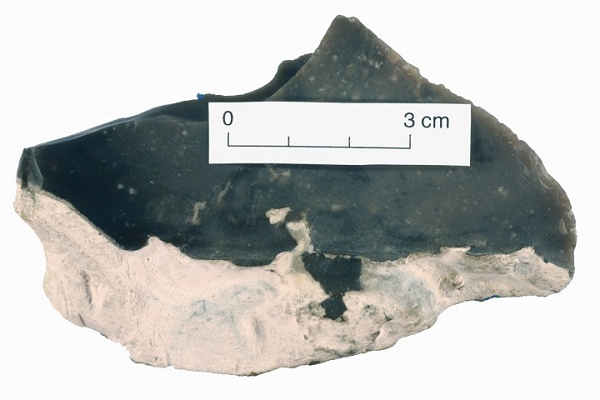
![]() Flint nodule from
chalk;
Flint nodule from
chalk;
Flint is made of silica, and forms irregular nodules in the
chalk. Often these are arranged in layers - the rows of
flint nodules can be an obvious feature of chalk cliffs,
road and railway cuttings. Flint is a variety of chert,
which in turn is composed of cryptocrystalline silica (i.e.
with crystals so small that they cannot be properly
distinguished even with a powerful microscope). The nodules
form when water, moving through the tiny spaces between
particles in the chalk, dissolves minute particles of silica
(such as sponge spicules) that are distributed throughout
the rock, and the silica is then precipitated again in
specific places. The photograph shows part of a broken flint
nodule. It has a white crust and a dark interior with a dull
surface. It breaks with curved fractures and forms hard,
sharp edges, rather like glass. This ability to be trimmed
into sharp-edged tools is what made flint so valuable to
Stone-Age Man.